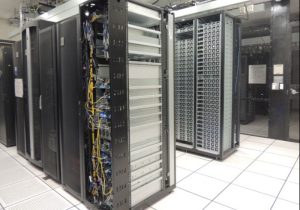 Technology departments have moved far beyond break fix solutions. Across industries, IT is asked to develop innovative solutions that support enterprise needs surpassing standard computing to support the mission and vision of the organization. At UTSA this often means research.
Technology departments have moved far beyond break fix solutions. Across industries, IT is asked to develop innovative solutions that support enterprise needs surpassing standard computing to support the mission and vision of the organization. At UTSA this often means research.
The Office of Information Technology’s (OIT) Research Computing Support Group (RCSG) was formed by a committee of faculty researchers with support from OIT to provide necessary support for UTSA researchers who are dependent on high performance computing.
The RCSG, led by Director of Research Computing Support and Innovative Solutions Brent League supports UTSA’s research community by facilitating growth, enabling productivity and innovation, maintaining and supporting the Research Data Center, offering High Performance Computing solutions and managing the UTSA Advanced Visualization Lab (VizLab).
High Performance Computing Support and Tier One
One of the goals of the university is to reach Tier One research intuition status. Across disciplines from art to neuroscience, research has increased and similarly the requirement to have tools to collect and interpret large data sets. The RCSG’s main goal is to support world class researchers, which directly supports the 2020 Blueprint priority of innovative research and discovery. The 2020 Blueprint, which builds upon the university’s strategic plan was developed to maintain the momentum toward Tier One which was seen with the 2016 Shared vision.
The UTSA Research Data Center houses high performance computing equipment that are categorized as UTSA research or grant funded. Through RCSG, faculty and student researchers now have access to computing, storage and visualization resources to support research that has specialized or highly intensive computation, storage, bandwidth or graphics requirements. “In the past, faculty researchers were encumbered with providing technical support for their computer systems,” stated Brent League, “but now OIT’s Research Computing Support Group has stepped in to fill that role, leaving faculty researchers to focus on the scientific goals of their research.”
Interactive Collaborative and Innovative Tools
Previously a showcase for technology, with the RCSG team’s support the VizLab is now a core research facility that allows researchers from all disciplines of art, science and engineering to conduct simulation and visualization research to better understand complex phenomena and translate data into images on large-scale and high resolution visualization walls or other display devices. The laboratory is staffed by OIT RCSG and supports UTSA’s mission of teaching, research and community engagement and contributes to UTSA’s goal to recruit the world’s top computational researchers.
There are several resources available through the VizLab including:
- The VizWall, the VizLab’s 14.4’ by 6’ tall visualization wall. It is comprised of 24 high-definition (HD) 30” monitors and has a maximum resolution of 98 million pixels.
- SHAMU, which is the largest high performance computation cluster at the university. It consists of 80 computation nodes, 1328 CPU Cores, 16 TB of shared memory and 96 TB of shared storage.
- NEMO, a high performance computation cluster for the VizLab. It consists of 12 computational nodes and is powered by dual Hex-Core Intel Xeon X5660 2.80 GHz processors (12M Cache) and dual nVIDIA Quadro FX 5800 graphics cards (4GB each).
- Haptic manipulators, which provide researchers and students a tactile experience with virtual models in computer-generated simulations.
- Oculus Rift virtual reality (VR) headsets, which use state-of-the-art displays and optics designed specifically for VR.
- Z Space, an interactive 3D teaching tablet that allows users to visualize, create and experience in ways beyond the traditional computation environment.
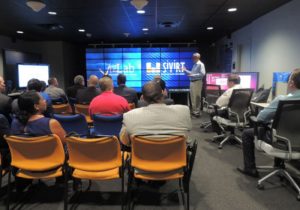 The RCSG is working to make sure that the technology available is not simply perceived as a novelty but are teaching tools that can be used to create interactive approaches to learning and research. The technology and resources are available at no additional cost to faculty and students. An increase in interest and use of these impressive resources to enhance and expand research at UTSA is anticipated. From research on interactive teaching visualizing Maya and other architectural sites to predicting tumor growth, the research possibilities are endless.
The RCSG is working to make sure that the technology available is not simply perceived as a novelty but are teaching tools that can be used to create interactive approaches to learning and research. The technology and resources are available at no additional cost to faculty and students. An increase in interest and use of these impressive resources to enhance and expand research at UTSA is anticipated. From research on interactive teaching visualizing Maya and other architectural sites to predicting tumor growth, the research possibilities are endless.
UTSA Advanced Visualization Laboratory is managed by the Office of Information Technology and has been funded by the National Science Foundation under the Major Research Instrumentation Program.

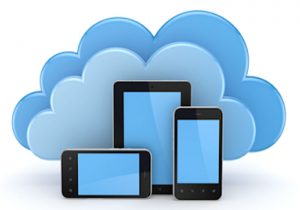 There’s no doubt about it – the Internet and mobile and cloud computing have made our lives easier and our businesses more productive, cost-effective and competitive. But make no mistake about it: the Internet is also a breeding ground for thieves and predators, not to mention an enormous distraction and liability if not used properly. It is causing people to be casual, careless and flat-out stupid about their privacy in an increasingly litigious society where heavy fines and severe reputational damage can occur with one slip up – which is why you cannot be casual or careless about introducing it to your organization. You can’t turn on the TV or read a newspaper without learning about the latest online data breach. And mobile devices are easily misplaced and stolen. Because of all of this, if you are going to allow employees to use mobile devices – particularly personal mobile devices – to access, store and use company data, then it’s critical that you have these 7 security measures in place.
There’s no doubt about it – the Internet and mobile and cloud computing have made our lives easier and our businesses more productive, cost-effective and competitive. But make no mistake about it: the Internet is also a breeding ground for thieves and predators, not to mention an enormous distraction and liability if not used properly. It is causing people to be casual, careless and flat-out stupid about their privacy in an increasingly litigious society where heavy fines and severe reputational damage can occur with one slip up – which is why you cannot be casual or careless about introducing it to your organization. You can’t turn on the TV or read a newspaper without learning about the latest online data breach. And mobile devices are easily misplaced and stolen. Because of all of this, if you are going to allow employees to use mobile devices – particularly personal mobile devices – to access, store and use company data, then it’s critical that you have these 7 security measures in place.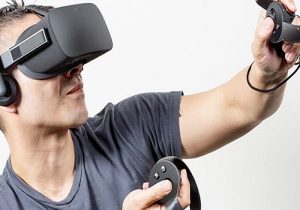 According to SuperData Research in 2016, investment in Virtual Reality (VR) will be $3 Billion. This is up from $1.9 Billion in 2015. Consider 60% of investment funds target Gaming Development. Other investment funds target immersive and cinematic VR. With this level of investment, the future use of virtual reality will almost certainly become a main stream enjoyment for consumers and businesses.
According to SuperData Research in 2016, investment in Virtual Reality (VR) will be $3 Billion. This is up from $1.9 Billion in 2015. Consider 60% of investment funds target Gaming Development. Other investment funds target immersive and cinematic VR. With this level of investment, the future use of virtual reality will almost certainly become a main stream enjoyment for consumers and businesses.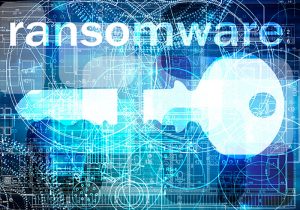 News headlines are rampant with accounts of ransomware attacks shutting down schools, hospitals and businesses across the country. Cyber criminals are infecting machines with malicious code, and then executing the code to encrypt and hold the data “hostage”. Once the ransom is paid, the attacker decrypts the data and returns the files to the user. In many cases, the longer someone waits to pay, the more money they have to spend to regain access to files.
News headlines are rampant with accounts of ransomware attacks shutting down schools, hospitals and businesses across the country. Cyber criminals are infecting machines with malicious code, and then executing the code to encrypt and hold the data “hostage”. Once the ransom is paid, the attacker decrypts the data and returns the files to the user. In many cases, the longer someone waits to pay, the more money they have to spend to regain access to files.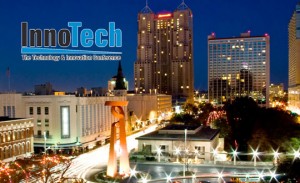 Presented by Presidio
Presented by Presidio For the past eight years we have served small businesses as an outsourced IT provider. We have learned how they operate and how they view their IT needs. These businesses are too small to need or pay for an in-house IT employee so they look to an outside source to service them. So what is it that they need?
For the past eight years we have served small businesses as an outsourced IT provider. We have learned how they operate and how they view their IT needs. These businesses are too small to need or pay for an in-house IT employee so they look to an outside source to service them. So what is it that they need?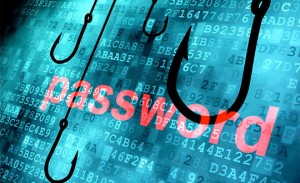 There is a particular type of Phishing attack which research teams see more and more often. This attack plays out as follows:
There is a particular type of Phishing attack which research teams see more and more often. This attack plays out as follows: We’ve entered into an age where network security breaches aren’t just common – they’re alarmingly more common than you think.
We’ve entered into an age where network security breaches aren’t just common – they’re alarmingly more common than you think. 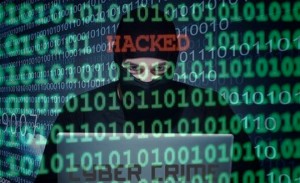 A Seattle company was recently broken into and a stash of old laptops was stolen. Just a typical everyday crime by typical everyday thieves. These laptops weren’t even being used by anyone in the company. The crime turned out to be anything but ordinary when those same thieves (cyber-criminals) used data from the laptops to obtain information and siphon money out of the company via fraudulent payroll transactions. On top of stealing money, they also managed to steal employee identities.
A Seattle company was recently broken into and a stash of old laptops was stolen. Just a typical everyday crime by typical everyday thieves. These laptops weren’t even being used by anyone in the company. The crime turned out to be anything but ordinary when those same thieves (cyber-criminals) used data from the laptops to obtain information and siphon money out of the company via fraudulent payroll transactions. On top of stealing money, they also managed to steal employee identities.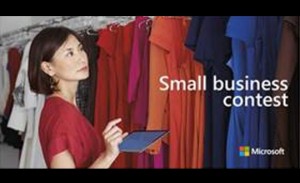 Microsoft is launching their second annual Small Business video contest, and we need your help. Last year we launched our first small business video contest with a simple request for small businesses to share their business stories via a 2-minute video. We reached 21 million people and had over 175 entries.
Microsoft is launching their second annual Small Business video contest, and we need your help. Last year we launched our first small business video contest with a simple request for small businesses to share their business stories via a 2-minute video. We reached 21 million people and had over 175 entries.